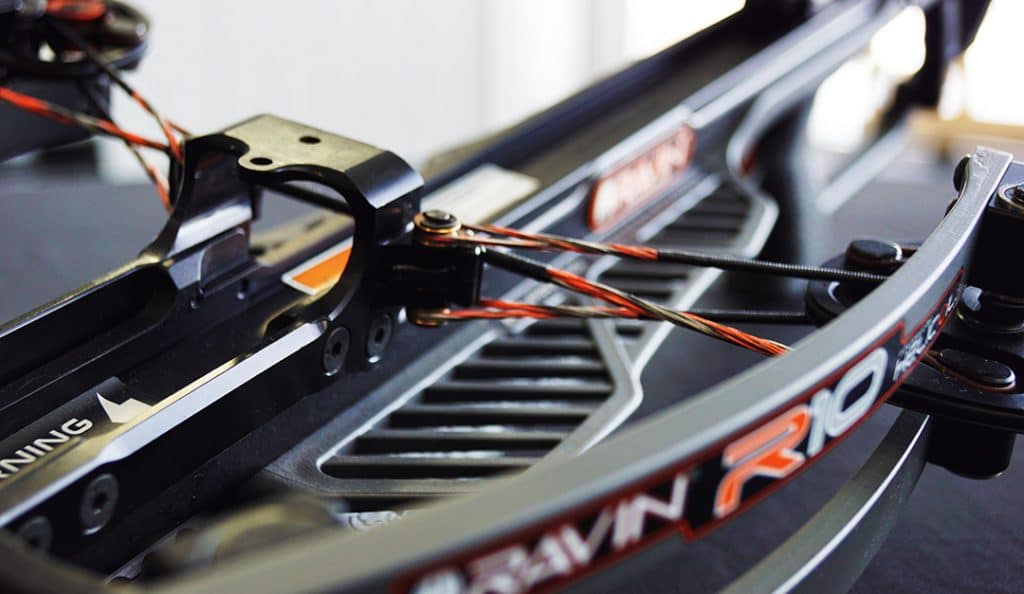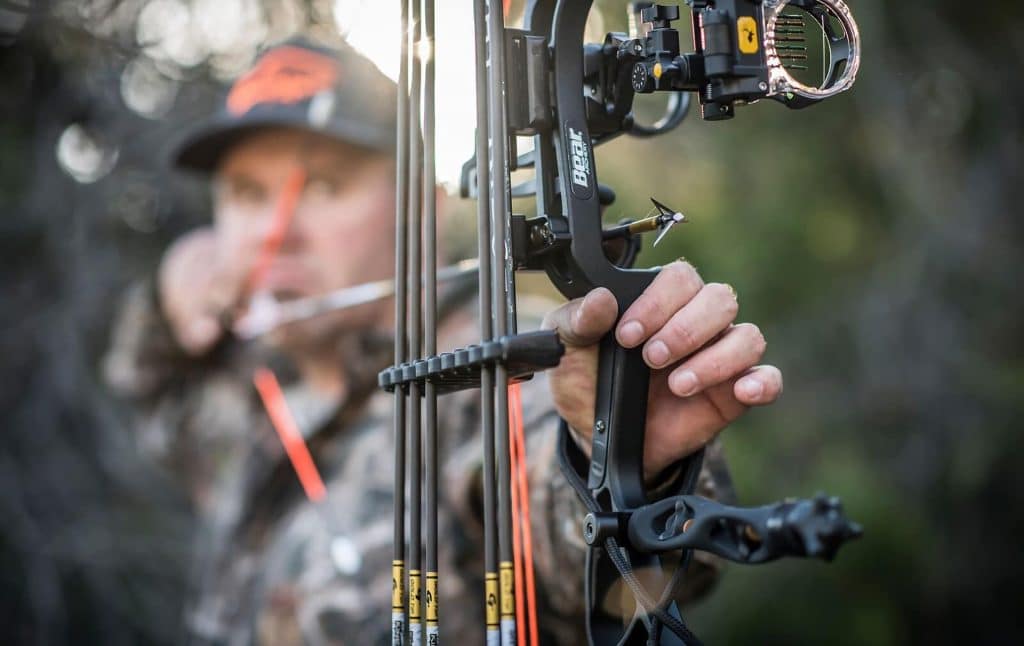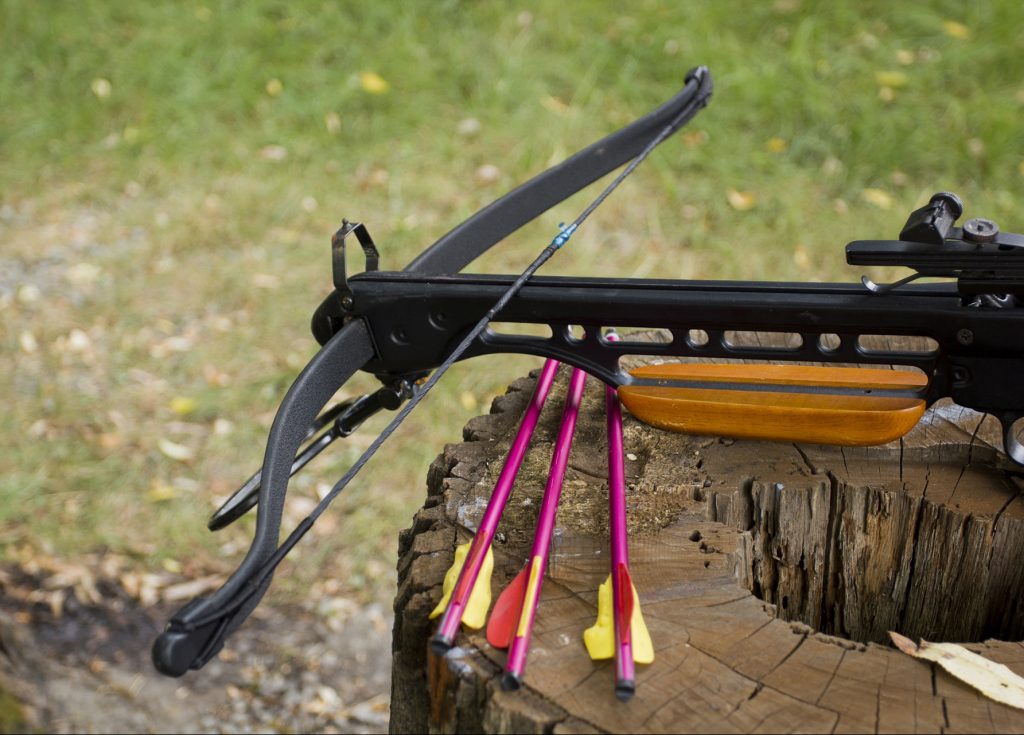

You might be a lover of archery yourself or want to show your kid a gun-free way of hunting. Investing in the best youth crossbow can help be that starting point for you and your kid to not only start a new sport but also a bonding experience—especially one safe for them at a young age. Shooting practice with the crossbow can also provide a ton of different development benefits for accuracy and kinetic motion in your child’s body. They will learn about control, as well as so many other tactical and technical skills.
In our review, we’ve highlighted the various features we consider important in our review and why they are important to be able to pick out the best ones. Some more crucial features include the overall weight, draw weight, speed and kinetic energy, and warranty information. We compiled a list of 5 best models and the Barnett Whitetail Hunter STR just tops them all.
Quick Summary
Top 5 Youth Crossbows Review 2024
More features: includes 4x32mm multi-reticle scope, two 22” headhunter arrows, lightweight quiver, rope cocking device, & lube wax
Barnett is well regarded for producing high quality crossbows at a competitive price point. The Whitetail Hunter is a particularly successful Barnett line. The Whitetail Hunter STR is one of the most popular options.
STR or Step Through Riser technology offers improved performance with a shorter crossbow. This crossbow design reduces the length while enhancing power stroke due to the integrated foot stirrup in the riser. This has created a lightweight bow with an overall length of under 35 inches. So, this crossbow is highly maneuverable even in tight quarters with a manageable profile for users of all sizes.
The bow assembly consists of high performance cams and a lightweight fiberglass composite riser. There are custom composite laminated limbs that can launch arrows with a velocity of up to 375 feet per second and 118.6 ft lbs of energy.
The crossbow itself feels comfortable to hold and the STR design helps to shift the center of gravity back to make it feel more stable when shooting. Like all Barnett crossbows, the design also includes a Picatinny rail that allows you to attach additional hardware such as a flashlight or extra quiver.
There is also a host of safety features. The TriggerTech system has Frictionless Release Technology to create a smoother, creep free pull. There are also nock sensors that detect if a nock properly touches the string. There is also an anti dry fire mechanism and Soft Lok floating retainer to prevent accidental dry fires.
The crossbow is easy to put together due to a single bolt assembly design. The scope is almost perfectly sighted out of the box, so you can get shooting almost straight away.
More features: Camo stock, Black stock, quad limbs fitted with a precision CNC-machined cam; integrated string suppressors for a quiet, vibration-free shot
Second, on this crossbow recommendations list is the CenterPoint Sniper. The manufacturer uses composite and aluminum in the bow’s construction, which helps keep the weight down.
When hunting and in the field, the weight is, of course, going to be invaluable since your kid won’t need to carry a heavy bow around. That said, it is on the heavier side in comparison to the rest of the list. Also, the aluminum makes it relatively durable.
This crossbow’s CAMS system is specifically made to deliver power and accuracy to your arrows when you shoot them. When combined with the machined rail, it is part of the reason why you’re able to shoot arrows at 370 feet per second. The other reason for this is the 185-pound draw weight.
Also, most youths will have different body compositions depending on their age and genes, and the manufacturer caters to that by adding an adjustable stock and foregrip. The result is a customized fit for their shoulders that makes the crossbow more comfortable to shoot.
Additionally, there is the safety and anti-dry fire trigger that makes the bow less hazardous to use. Add that to the integrated string suppressors, and you have an effective shooting system that won’t startle your target before it’s too late.
Finally, you get a few accessories, including a scope, quiver, rope cocker, and arrows. Even a five-year warranty is added to the mix.
More features: compression molded fiberglass limb, auto-safety cocking mechanism, complete accessory package
One of the stand out features of the CenterPoint Tyro 4x recurve crossbow is the ease of assembly. Even as a beginner, you should find it simple and easy to assemble the unit, with the help of a user-friendly gear supplied with the crossbow.
Another great feature of this crossbow is the auto safety cocking mechanism. This is an automatic safety feature that is engaged every time you pull towards a fully cocked position. You can also manually change the safety to a shoot mode simply. This allows you the crossbow to accept the string to be shot. When you’re ready to shoot an arrow, simply slide the switch to the FIRE position. There is also an anti-dry fire trigger mechanism, which provides an additional layer of safety, so you don’t mess up the crossbow with no bolt cocked.
The Tyro has a velocity of 245 feet per second and a draw weight of 175 pounds. This means that it is easier for beginners to handle. However, with the right set up, an experienced shooter can get sufficient firepower for the task.
The crossbow is lightweight and compact with a weight of just 5.75 pounds. The limbs are tough and made out of compression molded fiberglass for reliability. This construction also ensures this crossbow can withstand the elements and offer years of use, particularly with the support of a five-year warranty.
More features: fiberglass limb, composite frame, adjustable rear sight, cocking stirrup, includes two 16″ aluminum bolts
The Snake Eye Tactical Cobra System Pistol Crossbow stands out as an exceptional budget pick for youth crossbows. With an 80-pound draw weight, it boasts an impressive firing speed of up to 225 fps, making it ideal for turkey and small game hunting. One of its standout features is the self-cocking mechanism, ensuring ease of use for beginners. Safety is paramount with its automatic safety mechanism and a fore grip that comes with a finger guard. The crossbow doesn’t skimp on customization either. The adjustable stock and sight, coupled with weaver rails, allow users to tailor the crossbow to their preferences. Additionally, it comes with three 7/8” broad head hunting bolts and three aluminum bolts, ensuring you’re ready for action right out of the box. In summary, the Snake Eye Tactical Crossbow offers a blend of power, safety, and customization, making it a top choice for young enthusiasts.
What we liked:
What could be better:
More features: lightweight plastic construction, right-hand orientation
Dressed in the captivating Veil Cervidae color, this compact powerhouse boasts a remarkable speed of 405 feet per second. Its unique design, which mimics the feel of a rifle, allows young archers to transition skills from rifle shooting effortlessly. Despite its lightweight frame of just 3 pounds, it doesn’t compromise on performance or safety. It comes equipped with an array of safety features, including the Soft Lok Floating Bristle Arrow Retainer and Anti-Dry Fire (ADF) trigger system. The package is comprehensive, offering two Hyperflite 22″ arrows, a 4X32mm multi-reticle scope, and more. Given its features, safety mechanisms, and the accessories it comes with, it’s no wonder it stands out as the best value proposition for young enthusiasts.
Whether you are buying a new crossbow for your kid or he or she needs a new one because of how often they are playing, here is a buying guide to help you choose the right one.
Is it safe to give your child a crossbow?
Since you’re already here on this article, you should probably know that giving your child a crossbow comes with various precautions.
For a child, an upper limit of 200 lbs is standard. You should also realize that you can set the crank to make it easier for the kid to hold and carry. Normally, the actual weight of the crossbow will be from 8 to 13 lbs. However, some crossbows, like our budget pick—the Daisy Youth Archery YA4003—is four lbs. So if you have a smaller kid looking to start out, that one is probably your best option.
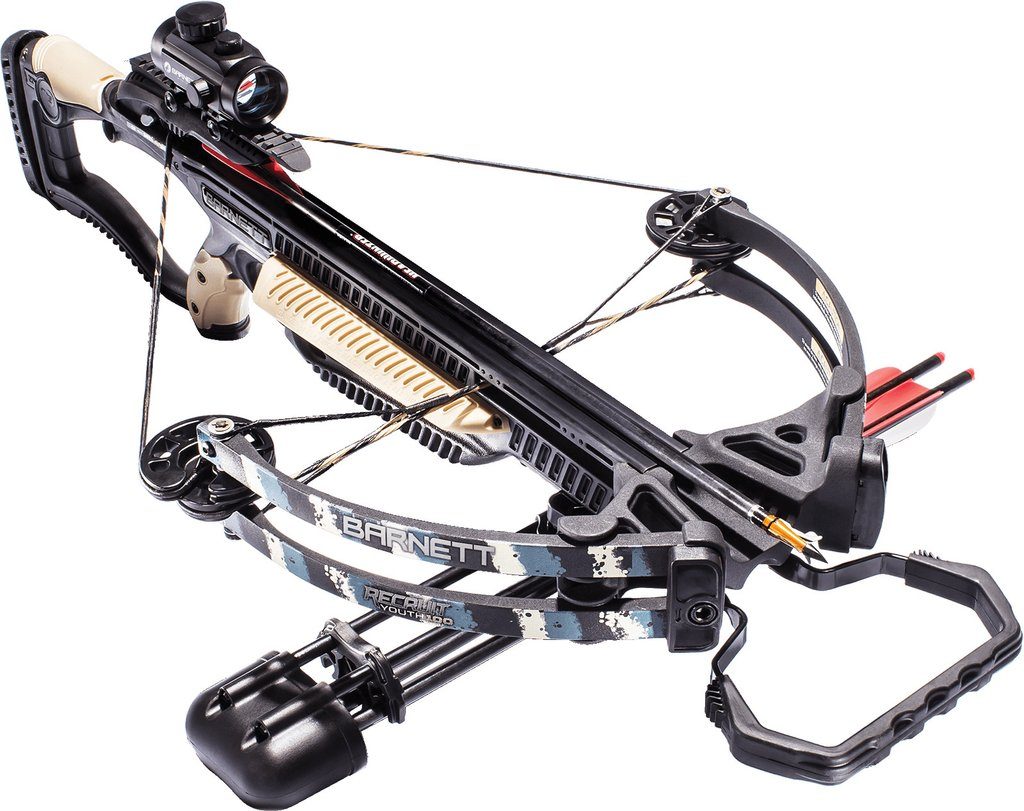
Here are some of the more common styles:
Bottom line: you’re searching for a child’s crossbow. What can we assume? He or she most likely won’t be at the professional level just yet.
Knowing a few tips and tricks for shooting the crossbow for beginners can definitely help the learning curve go a bit smoother:
There are four steps you should follow.
Especially since your child will probably outgrow the crossbow in a few years (unless they have a huge growth spurt) or they may even change their interests at the drop of the hat, you’ll definitely not want to go spending a huge chunk of change on your crossbow.
Investing in a quality crossbow that is targeted at the youth level will not only be good for your kid to grow quality-wise, it will also be beneficial for your budget.
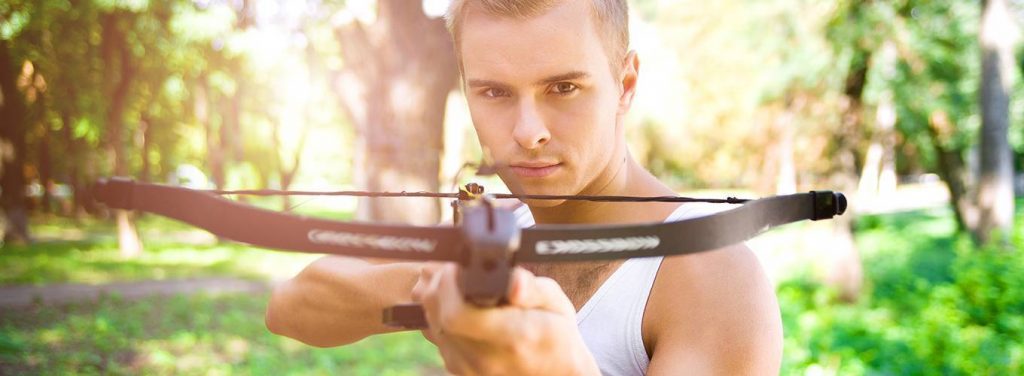
Especially since your child is probably not a professionally-rated bodybuilder, they might not be able to hold the crossbow, which is over twice the weight of a conventional bow.
A great tip would be to have your child hold random household objects and see how heavy the various objects are and how comfortable they feel. Your local bow shop that also stocks youth crossbows can be of assistance, as well. See if they will let your child hold one on a target without an arrow. Your child should be able to hold the bow steady for at least eight seconds.
Especially since your children are involved, you will want to invest in the safety of the product more than the quality. Safety is generally pretty high on the priority list with crossbows—but it is especially for those which are more for children than anybody else.
These crossbows will have a built-in firing mechanism which makes it so that the crossbow has to be physically disengaged before firing.
When it comes to safety, however, you’ll definitely want to educate your children on the proper protocol and safety precautions before letting them use a crossbow.
On a child’s crossbow, the most important thing on it is the weight. You have to make sure that the bow fits the child and he or she is able to draw the weight (normally around 150 lbs).
The string of the crossbow has a direct correlation of the speed. You can either choose your strings to be customized, stock bowstrings, cables, and so much more.
The speed is normally measured in FPS, which stands for feet-per-second.
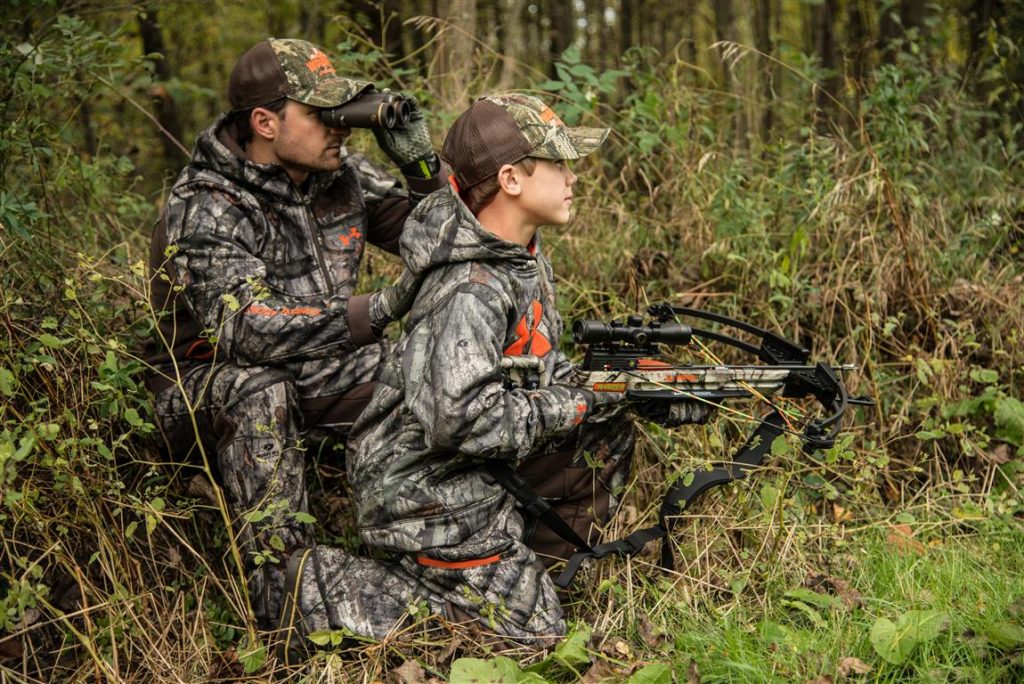
With the mechanical advantages available in the crossbow, your child will be able to use his or her strength and draw a ton of power in the crossbow.
Most of the crossbows on this guide are backed by a warranty of 5 years. It’s great to have a few years warranty guaranteed in the crossbow because of a few reasons.
For one—it’s for your kid. With children, you can never be too careful (because they usually are not). Another great reason to have a quality warranty is the fact that the crossbow should grow with your kid—and with his or her evolving skill level.
Since you already made an investment, you might want to make sure that you know how to properly maintain your crossbow.
Here are some tips that you should follow:
Make sure the string and cables are waxed. With the package, you’ll normally have access to a tube of wax. Waxing the string and cables should be done on a regular basis—however, if you have questions about how often, check the instruction manual.
The wax should be applied length-wise to the string.
Make sure the rail is lubricated. You’ll be able to have smoother traction of your bolt, which will help in the accuracy of your shot.
Always give your crossbow and arrows a thorough inspection before shooting. Look for cracks, twisting, splintering or bending in the arrows, shafts, and limbs. You can also clean the scope lens from time to time.
For your most frequently asked questions, here are a few answers:
You should also know you cannot shoot within 250 feet of “any home, school building or playground, public structure, farm structure in use, or occupied factory or church.”
If you’ve decided to skip out on all the detailed product reviews and comparison we’ve mentioned above, here is a quick look:
The Barnett Whitetail Hunter STR is our Editor’s Choice for the best all-around crossbow. This lightweight crossbow comes with a whole set of accessories a teenager needs to start practicing crossbow shooting.
The CenterPoint Tyro Recurve Crossbow is our Best for Beginners youth crossbow. It’s a fairly priced crossbow suitable for sports and hunting – 245 fps of speed and 56 ftlb of kinetic energy for the price is a great deal every beginner will appreciate.
The Barnett HyperGhost 425 is our Best Value Pick. As a composite-style crossbow, it is extremely lightweight, measured only at 6.4 lbs. It has a draw weight of 100 lbs and reaches a speed of 256 fps. Backed by a 5-year limited warranty, it also contains features like a 12.5’’ power stroke, arrows, an arrow holder, and a rope cocking device.
We hope that this guide has helped you pick out the best youth crossbow for your child or for a young hunter you know!


